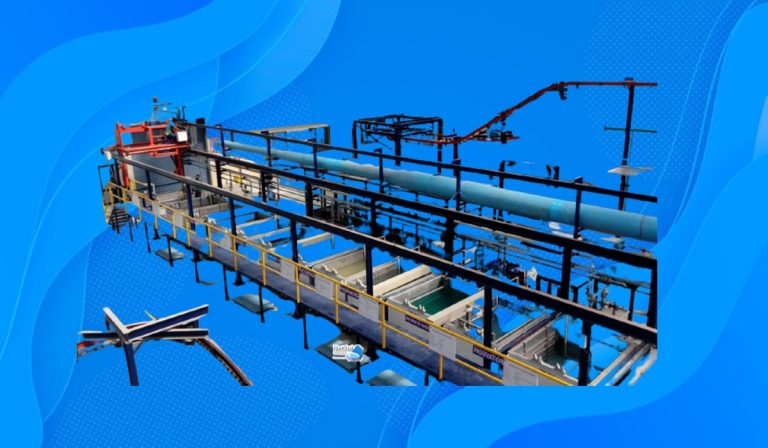
Desalination, softening and water treatment have long relied on Pre-treatment solutions for Commercial reverse osmosis plants (RO) as it removes wide range of contaminants. The fresh water and ground water resources are becoming scarce. Technologies like RO are being used to treat wastewater and surface waters. Such waters contain significantly more particulate and organic materials plus other solids that might not be suitable. Each technology is produced, planned and constructed for dissolved ion elimination, salts, and other particle removal. Therefore, a suitable pre-treatment is essential in terms of efficiency, longevity and the total cost of operating these plants.
Goals of pre-treatment solutions for Commercial RO Plants
- Making feed water for the Commercial RO Plant compatible with the membrane.
- Pre-treatment is necessary to reduce membrane fouling, scaling & degradation.
- Extend the effectiveness and lifespan of the membrane elements.
Methods of pre-treatment in Commercial RO Plants
- Microfiltration (MF)
It contains pores that are only 0.1–10 m in size and is efficient at eliminating germs and colloidal particles. Microfiltration aids in lowering a Commercial RO unit’s potential for fouling. Netsol Water, as a manufacturer, can utilize several membrane configurations, although “hollow fibre” is the most typical. The dirty water is often collected from the interior of the fibres and the water is pumped from the outside of the fibres.
Typically, “dead-end” flow is used by microfiltration membranes used in potable water applications. In a dead-end flow, the membrane filters all of the water that is given to it. The membrane surface develops a filter cake that needs to be frequently backwashed of it. On feed water sources with quite high quality and low turbidity inputs, recovery rates are typically greater than 90%.
- Granular activated carbon (GAC)
GAC is used to remove both organic components and lingering disinfectants from water, like chlorine and chloramines. Coal, nutshells or wood are used to create GAC media. Through a chemical reaction in which electrons are transferred from the surface of the GAC, activated carbon eliminates residual chlorine and chloramines. As a result, these become chloride ions, which are no longer oxidizers.
- Multi-media filters (MMF)
A Multi-Media Filter is used to assist keep a Commercial RO system from being fouled. Anthracite coal, sand and gravel are the three media layers that make up a multi-media filter, with gravel acting as the bottom support layer. Because of the variations in size and density, these are the preferred media. The heavier (but smaller) gravel will stay at the bottom and the larger (but lighter) anthracite coal will be on top. The filter media configuration enables the retention of tiny dirt particles deeper inside the media while allowing the removal of larger dirt particles near the top of the media bed. Thus, the entire bed functions as a filter. It results in significantly longer intervals between backwashes and effective particulate removal.
A properly functioning multi-media filter can filter out particles as small as 15-20 microns. It may remove particles as small as 5 to 10 microns by using a coagulant additive, which causes minute particles to combine to form larger particles that can be filtered.
Note: When the Silt Density Index (SDI) value exceeds 3 or the turbidity is greater than 0.2 NTU, a multi-media filter is advised.
- Antiscalants and scale inhibitors
Antiscalants and scale inhibitors are substances that can be added to feed water before a Commercial RO unit to assist in lowering the feed water’s potential for scaling. Scale inhibitors and antiscalants raise the solubility thresholds for problematic inorganic chemicals. By raising the solubility limits, you can concentrate salts more intensely than would otherwise be feasible, leading to higher recovery rates and larger concentration factors. They function by obstructing crystal development and scale formation. The feed water chemistry and RO system design determines the appropriate antiscalant or scale inhibitor to employ as well as the dosage.
- Ion exchange softening
By swapping out ions that cause scaling with ions that do not, a water softener can assist prevent scaling in a Commercial RO Plant. In the event that the water softening’s under drains malfunction, it is crucial to install a 5 micron cartridge filter immediately after the softener.
- Injection of sodium bisulfite (SBS)
Remaining chlorine can be eliminated by adding sodium bisulfite (SBS), a reducer, which is added to the water stream before the RO unit in the right amount.
We assure that your Commercial RO Plant delivers high purity water for many years; it is designed properly; it has a maintenance schedule and is supported by knowledgeable service personnel. To learn more about our wide range of Commercial RO Plant manufacturers, call us at +91-9650608473 or send an email to enquiry@netsolwater.com
